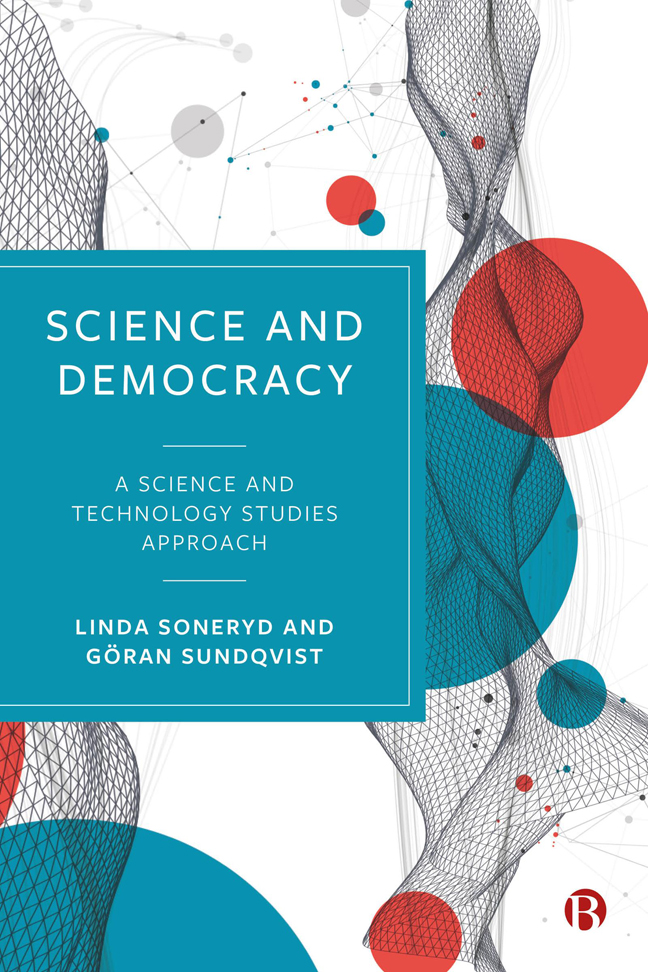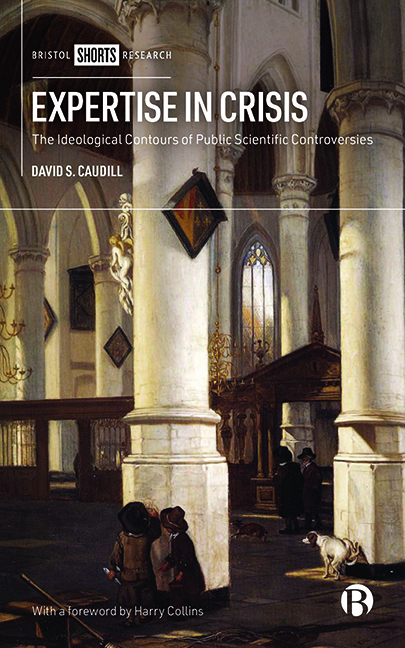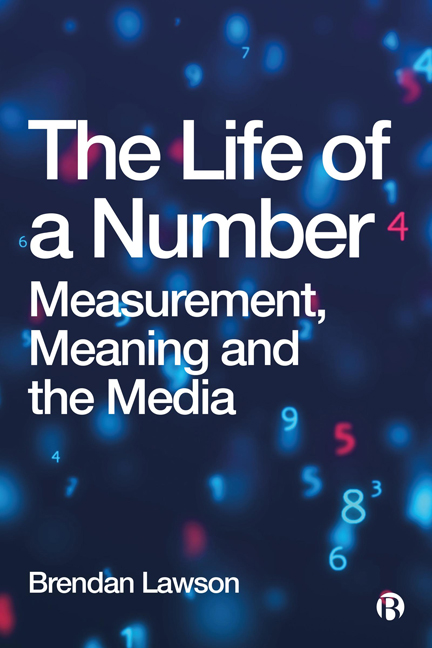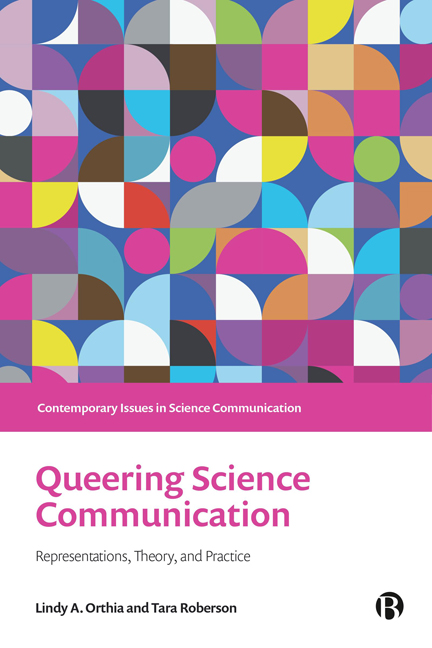Refine search
Actions for selected content:
12661 results in History of science

Science and Democracy
- A Science and Technology Studies Approach
-
- Published by:
- Bristol University Press
- Published online:
- 23 January 2024
- Print publication:
- 29 September 2023

Expertise in Crisis
- The Ideological Contours of Public Scientific Controversies
-
- Published by:
- Bristol University Press
- Published online:
- 18 January 2024
- Print publication:
- 31 January 2023

The Life of a Number
- Measurement, Meaning and the Media
-
- Published by:
- Bristol University Press
- Published online:
- 18 January 2024
- Print publication:
- 28 April 2023

Queering Science Communication
- Representations, Theory, and Practice
-
- Published by:
- Bristol University Press
- Published online:
- 18 January 2024
- Print publication:
- 28 April 2023
PART III - Contaminating<>Cohabiting
-
- Book:
- Ecological Reparation
- Published by:
- Bristol University Press
- Published online:
- 28 March 2024
- Print publication:
- 01 December 2023, pp 117-118
-
- Chapter
- Export citation
23 - Technological Black Boxing versus Ecological Reparation: From Encased-Industrial to Open-Renewable Wind Energy
-
-
- Book:
- Ecological Reparation
- Published by:
- Bristol University Press
- Published online:
- 28 March 2024
- Print publication:
- 01 December 2023, pp 362-376
-
- Chapter
- Export citation
13 - New Peasantries in Italy: Eco-Commons, Agroecology and Food Communities
-
-
- Book:
- Ecological Reparation
- Published by:
- Bristol University Press
- Published online:
- 28 March 2024
- Print publication:
- 01 December 2023, pp 194-207
-
- Chapter
- Export citation
PART VII - Isolating<>Embodying
-
- Book:
- Ecological Reparation
- Published by:
- Bristol University Press
- Published online:
- 28 March 2024
- Print publication:
- 01 December 2023, pp 327-328
-
- Chapter
- Export citation
6 - The Cosmoecological Workshop: Or, How to Philosophize with a Hammer
-
-
- Book:
- Ecological Reparation
- Published by:
- Bristol University Press
- Published online:
- 28 March 2024
- Print publication:
- 01 December 2023, pp 104-116
-
- Chapter
- Export citation
PART VIII - Growth<>Flourishing
-
- Book:
- Ecological Reparation
- Published by:
- Bristol University Press
- Published online:
- 28 March 2024
- Print publication:
- 01 December 2023, pp 377-378
-
- Chapter
- Export citation
10 - Land in Our Names: Building an Anti-Racist Food Movement
-
-
- Book:
- Ecological Reparation
- Published by:
- Bristol University Press
- Published online:
- 28 March 2024
- Print publication:
- 01 December 2023, pp 161-163
-
- Chapter
- Export citation
26 - Ordinary Hope
-
-
- Book:
- Ecological Reparation
- Published by:
- Bristol University Press
- Published online:
- 28 March 2024
- Print publication:
- 01 December 2023, pp 417-433
-
- Chapter
- Export citation
15 - Travelling Memories: Repairing the Past and Imagining the Future in Medium-Secure Forensic Psychiatric Care
-
-
- Book:
- Ecological Reparation
- Published by:
- Bristol University Press
- Published online:
- 28 March 2024
- Print publication:
- 01 December 2023, pp 225-241
-
- Chapter
- Export citation
22 - Cultivating Attention to Fragility: The Sensible Encounters of Maintenance
-
-
- Book:
- Ecological Reparation
- Published by:
- Bristol University Press
- Published online:
- 28 March 2024
- Print publication:
- 01 December 2023, pp 344-361
-
- Chapter
- Export citation
2 - Hesitant: Three Theses on Ecological Reparation (Otherwise)
-
-
- Book:
- Ecological Reparation
- Published by:
- Bristol University Press
- Published online:
- 28 March 2024
- Print publication:
- 01 December 2023, pp 37-49
-
- Chapter
- Export citation
Acknowledgements
-
- Book:
- Ecological Reparation
- Published by:
- Bristol University Press
- Published online:
- 28 March 2024
- Print publication:
- 01 December 2023, pp xiv-xiv
-
- Chapter
- Export citation
16 - Conversations on Benches
-
-
- Book:
- Ecological Reparation
- Published by:
- Bristol University Press
- Published online:
- 28 March 2024
- Print publication:
- 01 December 2023, pp 242-257
-
- Chapter
- Export citation
Notes on Contributors
-
- Book:
- Ecological Reparation
- Published by:
- Bristol University Press
- Published online:
- 28 March 2024
- Print publication:
- 01 December 2023, pp xi-xiii
-
- Chapter
- Export citation
24 - Algorithmic Food Justice
-
-
- Book:
- Ecological Reparation
- Published by:
- Bristol University Press
- Published online:
- 28 March 2024
- Print publication:
- 01 December 2023, pp 379-396
-
- Chapter
- Export citation
18 - Commons-Based Mending Ecologies
-
-
- Book:
- Ecological Reparation
- Published by:
- Bristol University Press
- Published online:
- 28 March 2024
- Print publication:
- 01 December 2023, pp 275-288
-
- Chapter
- Export citation
